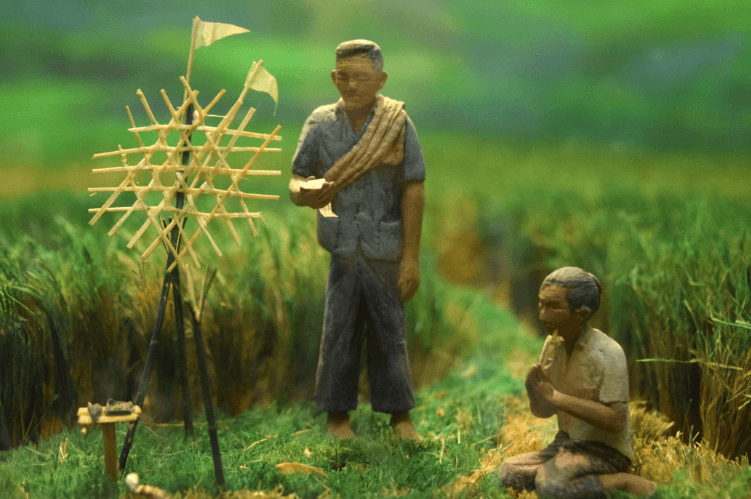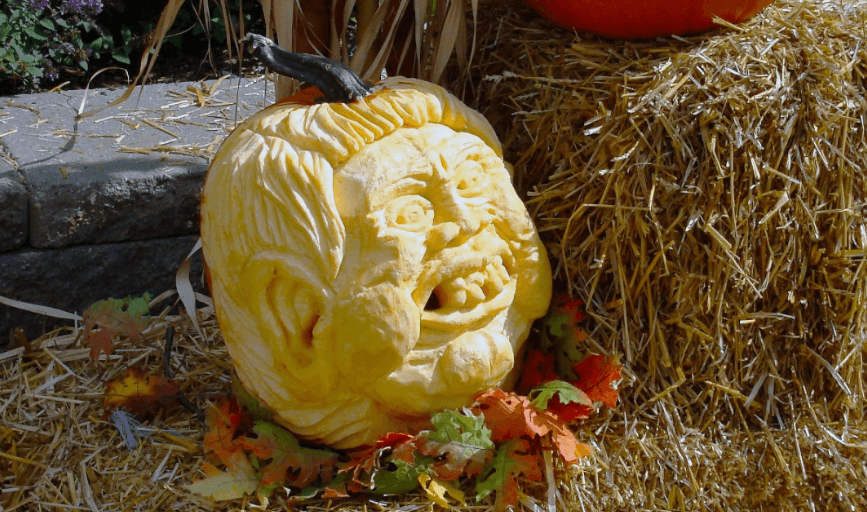Table Of Contents
- 1 Introduction to Sculpting with Nature-Inspired Objects
- 1.1 What is sculpting with nature-inspired objects?
- 1.2 Why is sculpting with nature-inspired objects a good choice for beginners?
- 1.3 What are some of the materials you can use?
- 1.4 What are some techniques you can use?
- 1.5 Where can you find natural materials?
- 1.6 The Basic Techniques of Sculpting with Nature-Inspired Objects
- 1.7 Experimenting with Techniques
- 1.8 Here are some additional tips for sculpting with nature-inspired objects:
- 1.9 Advanced Techniques and Ideas
- 1.10 Advanced Techniques
- 1.11 Advanced Ideas
- 1.12 Conclusion
- 1.13 FAQs
Introduction to Sculpting with Nature-Inspired Objects
Sculpting with nature-inspired objects is a great way to get started in sculpture, and it can be a lot of fun even for beginners. There are many different natural materials that you can use, and they can all be used in a variety of ways to create beautiful and unique sculptures.
What is sculpting with nature-inspired objects?
Sculpting with nature-inspired objects is the art of creating sculptures using natural materials. These materials can be found in nature, such as rocks, sticks, leaves, flowers, and feathers.
Why is sculpting with nature-inspired objects a good choice for beginners?
There are many reasons why sculpting with nature-inspired objects is a good choice for beginners. First, it is a relatively inexpensive hobby. You can find natural materials for free or for a very low cost. Second, it is a very forgiving medium. If you make a mistake, you can simply start over. Third, it is a very creative medium. There are endless possibilities for what you can create.
What are some of the materials you can use?
There are many different natural materials that you can use for sculpting. Some common materials include:
- Rocks: Rocks come in a variety of shapes, sizes, and textures. They can be used to create abstract sculptures, landscapes, or even portraits.
- Sticks: Sticks can be used to create structures, such as houses or bridges. They can also be used to create abstract sculptures or still life arrangements.
- Leaves: Leaves come in a variety of colors and shapes. They can be used to create abstract sculptures, landscapes, or even still life arrangements.
- Flowers: Flowers are a beautiful and delicate material. They can be used to create abstract sculptures, still life arrangements, or even portraits.
- Feathers: Feathers are a soft and elegant material. They can be used to create abstract sculptures, still life arrangements, or even portraits.
What are some techniques you can use?
There are many different techniques you can use to sculpt with nature-inspired objects. Some common techniques include:
- Arrangement: This is the simplest technique. Simply arrange the natural materials in a pleasing way.
- Gluing: This technique is used to attach the natural materials together.
- Wiring: This technique is used to bind the natural materials together.
- Tying: This technique is used to bind the natural materials together.
Where can you find natural materials?
You can find natural materials in a variety of places, such as:
- Your backyard or local park
- A nature preserve or forest

Sculpting With Nature-Inspired Objects For Beginners - A beach or riverbank
- A thrift store or antique shop
The Basic Techniques of Sculpting with Nature-Inspired Objects
Now, we will discuss some of the basic techniques of sculpting with nature-inspired objects. These techniques will give you a solid foundation for creating your own sculptures.
Arrangement
Arrangement is the simplest technique of sculpting with nature-inspired objects. It simply involves arranging the natural materials in a pleasing way. The arrangement can be formal or informal, and the materials can be arranged in any way that you like.
Here are some tips for arranging natural materials:
- Use a variety of colors, shapes, and textures.
- Create balance and proportion in your arrangement.
- Pay attention to the negative space around your arrangement.
Gluing
Glue is a versatile tool that can be used to attach natural materials together. There are many different types of glue available, so you can choose the one that best suits your needs.
Here are some tips for using glue with natural materials:
- Use a strong adhesive that is waterproof and weatherproof.
- Apply the glue carefully to avoid dripping or smearing.
- Allow the glue to dry completely before handling your sculpture.
Wiring
Wiring is a great way to bind natural materials together. It is especially useful for creating structures or sculptures that need to be strong.
Here are some tips for using wire with natural materials:
- Use a wire that is strong enough to support the weight of your sculpture.
- Make sure the wire is long enough to wrap around the natural materials.
- Use pliers to bend the wire into the desired shape.
Tying
Tying is another way to bind natural materials together. It is a more rustic and natural look than using wire.
Here are some tips for tying natural materials:
- Use strong cord or twine.
- Make sure the ties are secure, but not too tight.
- Tie the knots in a way that is pleasing to the eye.
Experimenting with Techniques

The best way to learn how to use these techniques is to experiment and see what works best for you. There are no hard and fast rules, so feel free to be creative and try new things.
Here are some additional tips for sculpting with nature-inspired objects:
- Start with simple projects and gradually work your way up to more complex ones.
- Be patient and don’t get discouraged if your first few sculptures are not perfect.
- Have fun and enjoy the process of creating art with nature’s materials.
Advanced Techniques and Ideas
Let’s discuss some more advanced techniques and ideas for sculpting with nature-inspired objects. These techniques will help you create more complex and interesting sculptures.
Advanced Techniques
-
Harvesting and Preserving Natural Materials: This involves finding, collecting, and preserving natural materials for your sculptures. It is important to follow the principles of sustainability and only take what you need.
-
Carving and Shaping: This technique involves using tools to carve or shape natural materials. This can be used to create more intricate details and add dimension to your sculptures.
-
Integrating Other Materials: This involves incorporating other materials, such as metal, plastic, or glass, into your sculptures. This can add texture, color, and contrast to your work.
-
Creating Movement and Dimension: This involves using techniques such as stacking, layering, and bending to create movement and dimension in your sculptures. This can make your sculptures more dynamic and engaging.
Advanced Ideas
-
Creating Assemblages: This involves combining natural materials with other objects, such as found objects, to create sculptures. This can be a great way to create unique and personal pieces of art.
-
Using Natural Materials to Represent Figurative Forms: This involves using natural materials to create sculptures that represent people, animals, or other objects. This can be a challenging but rewarding technique.
-
Creating Site-Specific Sculptures: This involves creating sculptures that are specific to the location where they will be installed. This can take into account the surrounding landscape, architecture, and natural features.
-
Experimenting with Different Techniques: The beauty of sculpting with nature-inspired objects is that there are no rules. Feel free to experiment with different techniques and materials to find your own unique style.
Conclusion
Sculpting with nature-inspired objects is a fun and rewarding hobby that can be enjoyed by people of all ages. It is a great way to get creative and express your artistic side. With a little practice, you can create stunning sculptures that will capture the beauty of nature.
FAQs
Q: What are some common mistakes that beginners make when sculpting with nature-inspired objects?
A: Some common mistakes that beginners make include:
- Not using a variety of materials.
- Not using the materials properly.
- Not being patient and not allowing the glue or other materials to dry completely.
- Not being creative and not trying new things.
Q: How can I find natural materials to use for my sculptures?
A: There are many places to find natural materials, such as:
- Your backyard or local park
- A nature preserve or forest
- A beach or riverbank
- A thrift store or antique shop
Q: What is the best way to preserve natural materials?
A: The best way to preserve natural materials is to dry them properly. You can dry them by air drying, using a dehydrator, or oven drying.
Q: What are some tips for transporting sculptures made with natural materials?
A: The best way to transport sculptures made with natural materials is to carefully wrap them in bubble wrap or newspaper. You should also place them in a sturdy container that will protect them from damage.
Q: What are some ideas for using sculptures made with natural materials in my home?
A: There are many ways to use sculptures made with natural materials in your home, such as:
- Displaying them on a mantle or shelf.
- Using them to fill empty spaces on tables or shelves.
- Using them to create centerpieces for tables.
- Hanging them on walls.
I hope this blog post has been informative and inspiring. If you have any questions, please feel free to leave a comment below.
1 thought on “Harmonious Sculpting With Nature-Inspired Objects For Beginners”